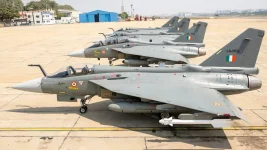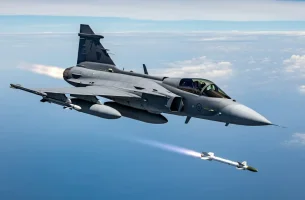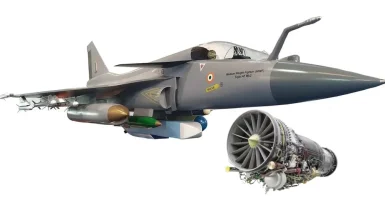- Views: 3K
- Replies: 21
Hindustan Aeronautics Limited (HAL) has affirmed its confidence in the new Tejas Mk1A fighter jet, stating that the aircraft's basic design is complete and fully prepared for future software-based enhancements.
However, this optimistic outlook is shadowed by significant delays in integrating India's indigenous Astra Mk1 missile. Reports indicate these challenges stem from software compatibility issues with the aircraft's Israeli-supplied radar, which require a "green light" from the foreign manufacturer.
At a recent industry event, HAL Chairman and Managing Director, Dr. D.K. Sunil, stated that the aircraft is now "structurally ready." He explained that any future upgrades to its radar, electronic warfare (EW) systems, or weapons capabilities would be "software-related" and "quite easy to quickly upgrade."
This manufacturing confidence was highlighted on October 17, when the first Tejas Mk1A aircraft produced at HAL's Nashik facility completed its maiden flight.
This jet is now undergoing trials to validate its key upgrades, including the advanced Israeli-origin ELTA EL/M-2052 Active Electronically Scanned Array (AESA) radar.
The EL/M-2052 radar, which is built in India by HAL under a license agreement, is a significant advancement over the Tejas Mk1's older system. It enables the jet to track multiple targets at beyond-visual-range (BVR) distances, reportedly up to 150 km.
While the local manufacturing of this radar supports India's 'Atmanirbhar Bharat' initiative, its core software and firmware remain under the proprietary control of the original designer, Israel Aerospace Industries (IAI).
This foreign dependency is at the heart of the current problem.
The primary challenge is the protracted integration of the Astra Mk1, an advanced 110-km range air-to-air missile developed by India's Defence Research and Development Organisation (DRDO).
While the Astra was previously cleared for the older Tejas Mk1, it has failed in tests with the new Mk1A. A test-fire in March 2025 reportedly failed due to software guidance glitches.
Integrating the Indian missile with the new Israeli AESA radar requires complex software code adjustments, which sources claim cannot be finalized without IAI's direct approval and technical validation.
This situation has reportedly caused frustration, with defence analysts and Indian Air Force (IAF) officials questioning why an Indian-made missile and a locally-produced radar are "beholden to Tel Aviv for the code."
The issue appears to originate from the 2016 contract for the radar, which grants IAI control over the system's core software. With HAL's Nashik facility still awaiting this critical validation, the aircraft's Full Operational Clearance (FOC) is now likely to be delayed beyond its original December 2025 target.
Dr. Sunil has publicly confirmed the delay, noting that the "only thing awaited now is the approval for some software changes in the Astra missile."
This software bottleneck is in addition to other production challenges, such as delays in engine supplies from GE Aerospace, which limit the annual production rate.
The IAF, which is counting on the delivery of 83 Tejas Mk1A jets by 2029 to replace its aging MiG-21 squadrons, has previously voiced its concerns. Former Air Chief Marshal V.R. Chaudhari had even suggested prioritising the next-generation Tejas Mk2 variant to avoid such foreign dependency issues.



